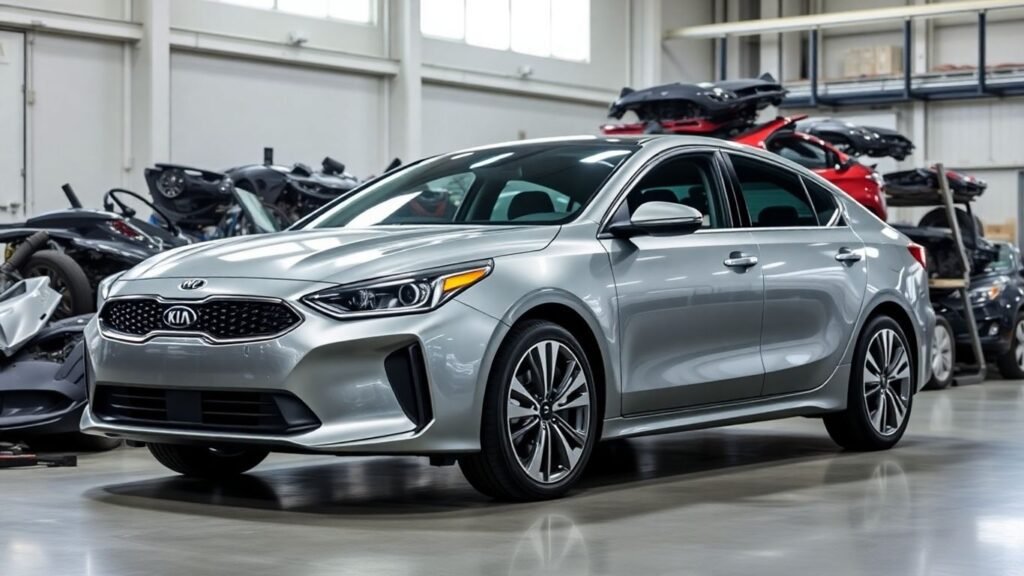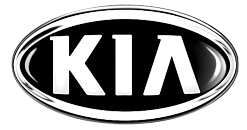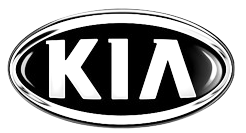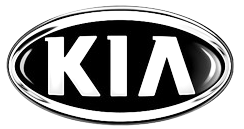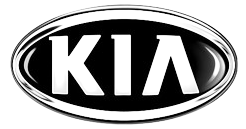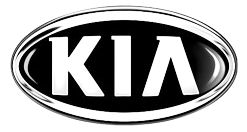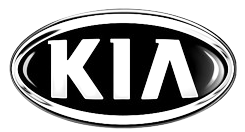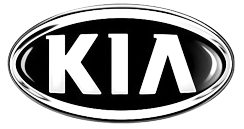You know, thinking about the future of cars can get pretty complicated. We hear a lot about electric this and self-driving that. But what about the cars we already have on the road, especially brands like Kia? Turns out, the folks who take apart old cars, the wreckers, are playing a bigger role than you might think. They’re not just getting rid of junk; they’re actually helping make newer Kias more reliable and even pushing the industry forward. It’s a bit of a behind-the-scenes operation, but it matters for how we think about cars today and tomorrow.
Key Takeaways
- Wreckers are becoming important for Kia’s reliability by salvaging and testing high-demand parts, ensuring quality for reused components, and offering economical alternatives.
- The auto wrecking sector contributes to innovation by identifying trends in part demand and adapting to new technologies, preparing for the influx of electric and hybrid Kia models.
- Responsible disposal practices at wreckers help reduce Kia’s environmental footprint through material recycling and adherence to environmental standards.
- Navigating regulations is key for wreckers, covering everything from licensing to the safe handling of hazardous materials from end-of-life Kias.
- Consumers benefit from wreckers through cost savings on parts and repairs, potential incentives for responsible disposal, and the need to choose reputable services for Kia vehicles.
The Evolving Landscape of Kia Vehicles at Wreckers
Common Kia Models Entering Wrecking Yards
Kia cars, much like many other brands, eventually find their way to wrecking yards. Models that were once popular, like the Kia Rio or the Sportage from the early 2000s, are now aging. When major repairs are needed, like engine work or transmission issues, the cost often becomes more than the car is worth. This is especially true for models that were originally budget-friendly. It’s not uncommon to see these vehicles arrive at a yard when their owners decide it’s more practical to get a newer car than to fix the old one.
Factors Driving Kia Vehicles to Wreckers
Several things push a Kia towards the wrecking yard. Age is a big one; parts wear out over time. Major accidents are another obvious reason – if the damage is too severe, fixing it just doesn’t make sense financially. Sometimes, it’s simply the cost of routine maintenance on an older vehicle that becomes too much for the owner. Think about it: a few thousand dollars for a repair on a car that’s only worth a couple thousand? Most people would rather put that money towards something newer and more reliable.
The journey of a Kia from a family car to a collection of salvageable parts is a common one. It’s a natural part of the automotive lifecycle, driven by economics and the simple fact that cars don’t last forever.
The Future of Kia Cars and the Role of Wreckers
As Kia continues to innovate with new technologies, including electric and hybrid models, the role of wreckers will change. Handling high-voltage batteries and complex electronic systems will require new skills and equipment. Wreckers will need to adapt to process these advanced vehicles, focusing on recycling valuable materials and salvaging specialized components. This shift means the wrecking industry isn’t just about old gasoline cars anymore; it’s becoming a key player in the sustainable lifecycle of all types of vehicles, including the future of Kia.
How Wreckers Contribute to Kia’s Reliability
You might think of car wreckers as just places where old cars go to die, but they’re actually a pretty big deal when it comes to keeping Kias on the road and even making them better. It’s not just about crushing metal; it’s about salvaging parts that still have plenty of life left in them. Think about it – a Kia that’s maybe ten or fifteen years old might have a perfectly good transmission or a set of headlights that are still in great shape. These aren’t just random bits and pieces; they’re components that can be tested, cleaned up, and then sold to someone who needs them for their own Kia. This whole process means that a car that might otherwise be headed for the scrap heap can actually help keep another vehicle running smoothly. It’s a smart way to extend the life of parts and, by extension, the cars themselves.
Salvaging and Testing High-Demand Kia Parts
When a Kia rolls into a wrecking yard, it’s not just a pile of metal. Skilled folks go through it, looking for parts that are still in good working order and are likely to be needed by other Kia owners. They’re particularly interested in components that are known to be reliable or are expensive to buy new. Things like engines, transmissions, alternators, and even smaller electronic modules are carefully removed. But they don’t just pull them out and stick them on a shelf. These salvaged parts undergo a series of checks and tests to make sure they meet certain standards before they’re offered for sale. This testing is key. It means that when you buy a used part from a reputable wrecker, you’re not just getting a cheap alternative; you’re getting something that’s been verified to work. This careful selection and testing process is a big reason why wreckers can actually boost the reliability of Kias out there on the road.
Ensuring Quality Control for Reused Components
Quality control is a big word in the auto industry, and it applies just as much to used parts as it does to new ones. Wreckers who are serious about their business have systems in place to check the parts they salvage. This might involve visual inspections, running diagnostic tests, or even bench testing components to see how they perform. For example, an engine might be checked for compression, or a transmission might be inspected for smooth gear changes. They know that if they sell faulty parts, their reputation takes a hit, and customers won’t come back. So, they have a vested interest in making sure that the parts they put back into circulation are good. It’s a bit like a second chance for these components, and the rigorous checks help make sure that second chance is a successful one.
The Economic Benefits of Wrecked Kia Parts
Let’s be honest, car repairs can get expensive, fast. Buying brand-new parts for a Kia, especially if it’s a few years old, can sometimes cost more than the car is worth. This is where wrecked Kia parts really shine. They offer a much more affordable option. You can often save a significant amount of money – sometimes 30% to 70% less than buying new. This makes it possible for more people to keep their Kias running without breaking the bank. It’s not just about saving money for the individual owner, either. It supports local businesses, creates jobs in the dismantling and sales process, and keeps money circulating within the community. Plus, it reduces the demand for manufacturing new parts, which has its own environmental and economic costs.
The process of salvaging and testing parts from end-of-life Kias isn’t just about getting rid of old cars. It’s a practical system that provides affordable, reliable components, helping owners maintain their vehicles and keeping more Kias on the road for longer. This cycle of reuse is a smart way to manage resources and support the automotive ecosystem.
| Part Type | New Part Cost (Est.) | Used Part Cost (Est.) | Savings (Est.) |
|---|---|---|---|
| Engine | $4,000 – $8,000 | $1,500 – $3,500 | 50% – 75% |
| Transmission | $3,000 – $6,000 | $1,000 – $2,500 | 50% – 70% |
| Alternator | $200 – $500 | $50 – $150 | 60% – 80% |
| Headlights | $150 – $400 (each) | $40 – $100 (each) | 60% – 75% |
Innovation Fueled by Wrecking Practices

You know, it’s easy to think of car wreckers as just places where old cars go to die. But honestly, they’re becoming pretty important hubs for figuring out what’s working and what’s not in car design, especially with brands like Kia. They’re seeing which parts are in high demand, which ones fail often, and that kind of real-world data is gold for manufacturers trying to build better cars.
Identifying Trends in Kia Part Demand
When a certain Kia model starts showing up in yards with the same worn-out part, wreckers notice. It might be a specific sensor that seems to give up after a certain mileage, or maybe a particular suspension component that just doesn’t hold up in certain conditions. This constant stream of data from the field helps Kia understand the true lifespan and common failure points of their components. It’s not just about what happens in a lab; it’s about what happens on the road, day in and day out. This feedback loop is pretty direct, and it can influence future designs and material choices.
The Role of Technology in Wrecking Kia Vehicles
Gone are the days of just smashing cars apart with a sledgehammer. Modern wrecking yards are getting pretty high-tech. They use specialized tools to carefully take apart vehicles, making sure they don’t damage the good parts. Software is a big deal too; it helps them keep track of every single part they salvage, so if you need a specific Kia alternator, they can find it quickly. Some yards are even using automated systems to speed up the dismantling process and recover more materials. It’s all about efficiency and making sure they can get usable parts back into circulation without a huge amount of manual labor.
The way cars are dismantled is changing. It’s not just about getting rid of them anymore. It’s about careful deconstruction, using smart tools, and keeping detailed digital records of everything. This makes it easier to find and reuse parts, which is good for everyone.
Preparing for Electric and Hybrid Kia Models
This is where things get really interesting. As Kia moves more into electric and hybrid vehicles, the wrecking industry has to adapt. These cars have different components, like high-voltage batteries, that need special handling and disposal. Wreckers are learning how to safely remove and process these parts. They’re also figuring out which components from EVs and hybrids are still valuable and can be salvaged. This preparation is key, because as more of these advanced vehicles reach the end of their life, the wrecking yards need to be ready to handle them responsibly and extract any usable parts, contributing to the circular economy for these newer technologies.
Environmental Stewardship in Kia Vehicle Disposal
Reducing Kia’s Environmental Footprint
When a Kia reaches the end of its road life, it doesn’t just vanish. The process of wrecking plays a big part in keeping our planet cleaner. Instead of letting old Kias pile up in landfills, which takes up valuable space and can lead to soil contamination, wreckers step in. They carefully take apart these vehicles, making sure that hazardous fluids like oil, coolant, and brake fluid are removed and handled properly. This stops nasty chemicals from seeping into the ground and our water. It’s a pretty important step that often gets overlooked.
Recycling Materials from End-of-Life Kias
Think of an old Kia as a treasure chest of materials. Most of a car is made of metal, like steel and aluminum, which are super recyclable. These metals get melted down and turned into new car parts or other products, cutting down on the need to mine for new raw materials. That saves a ton of energy and reduces pollution. Even things like batteries, especially from newer hybrid and electric Kias, are being handled with more care. While they present new challenges, there are growing efforts to recycle their valuable components and manage their disposal safely. It’s all about giving these materials a second life.
Adherence to Environmental Standards in Wrecking
Operating a car wrecking yard isn’t just about taking cars apart; it’s about doing it the right way. There are rules and regulations in place to make sure wreckers are following safe environmental practices. This includes how they store parts, how they deal with waste, and how they manage any hazardous substances. Reputable wreckers are licensed and inspected to confirm they’re meeting these standards. This oversight helps protect the environment and ensures that the whole process is done responsibly, from the moment a Kia arrives at the yard to the final recycling of its materials.
The auto-wrecking industry is changing. With more electric and hybrid Kias on the road, wreckers need new skills and equipment to handle things like high-voltage batteries. This shift means the industry is constantly adapting to new technologies and materials, aiming to be as green as possible.
| Material Type | Recyclability | Environmental Benefit |
|---|---|---|
| Steel | High | Reduces mining impact |
| Aluminum | High | Saves significant energy |
| Fluids | Managed/Reused | Prevents contamination |
| Batteries | Developing | Resource recovery |
Navigating Regulations in the Kia Wrecking Sector
Legal Frameworks for Auto Wrecking
Operating a vehicle wrecking business, especially one that handles Kias, isn’t just about having a big yard and some tools. There are actual laws and rules you have to follow. These aren’t just suggestions; they’re there to keep people and the environment safe. Think about it – cars have fluids, batteries, and other stuff that can be pretty nasty if they end up in the wrong place. So, governments have put rules in place to make sure wreckers handle all that properly. This means getting the right paperwork, knowing what you can and can’t do with certain parts, and generally operating in a way that doesn’t cause harm.
Licensing and Compliance for Kia Wreckers
To legally wreck cars, including Kias, you need the proper licenses. These licenses show that you know the rules and are committed to following them. Different states or regions might have slightly different requirements, but generally, you’ll need to prove you can handle the job safely and responsibly. This often involves inspections of your facility and a review of your business practices. Staying compliant means avoiding hefty fines and keeping your business running smoothly. It’s not just about passing a test once; it’s an ongoing commitment to doing things the right way, every single day.
Handling Hazardous Materials from Kias
Cars, even older Kias, contain materials that need special attention. We’re talking about things like engine oil, transmission fluid, antifreeze, brake fluid, and batteries. These aren’t things you can just dump anywhere. Regulations dictate how these hazardous materials must be drained, stored, and disposed of. Wreckers have to have procedures in place to manage these substances safely, preventing spills and contamination. It’s a big part of why wrecking yards are regulated – to make sure these potentially harmful substances are dealt with responsibly, protecting both the workers and the local environment.
The Consumer Advantage in the Kia Wrecking Market

When your Kia finally reaches the end of its road, or even if it just needs a costly repair, the local wrecker might be your best friend. It’s not just about getting rid of an old car; it’s about smart savings and doing a bit for the planet. You can often save a significant amount of money on parts and repairs by choosing used components from a reputable Kia wrecker.
Cost Savings on Kia Parts and Repairs
Think about needing a new alternator or a replacement mirror for your Kia. Buying brand new can really sting your wallet. But a used part from a wrecker? It’s usually a fraction of the cost. We’re talking potentially saving 30% to 70% compared to buying new. This makes keeping older Kias on the road much more affordable for everyday folks. It’s a practical way to handle unexpected repairs without taking out a loan.
Incentives for Responsible Kia Disposal
Getting rid of an old, non-running Kia doesn’t have to cost you. Many wrecking yards will actually pay you for your car, especially if it has desirable parts. They often offer free towing too, which is a nice bonus. So, instead of paying to have it hauled away, you can get cash and know your car is being handled responsibly. It’s a win-win: you get some money, and the car gets a new purpose through its parts.
Choosing Reputable Wreckers for Kia Vehicles
Not all wreckers are created equal, of course. It’s important to find a place that knows its Kias and tests its parts. Look for wreckers who can tell you about the condition of the part they’re selling and offer some kind of guarantee. A good wrecker will have a clean yard, organized inventory, and staff who can answer your questions. Asking around or checking online reviews can help you find a trustworthy place to get those needed Kia parts.
The process of selling your old Kia to a wrecker is often simpler than you might think. After removing any personal belongings, you can get quotes from a few different yards. Factors like the car’s age, condition, and the demand for its specific parts will influence the price you’re offered. It’s a straightforward transaction that benefits both you and the environment.
| Part Type | New Cost (Est.) | Used Cost (Est.) | Savings (Est.) |
|---|---|---|---|
| Alternator | $300 | $120 | $180 |
| Side Mirror | $150 | $60 | $90 |
| Radiator | $400 | $180 | $220 |
| Headlight Assembly | $250 | $100 | $150 |
The Road Ahead for Kia and Wreckers
So, what does all this mean for Kia cars and the future? It’s pretty clear that the days of just tossing old cars aside are long gone. Wreckers are becoming super important, not just for getting rid of old vehicles, but for keeping newer Kias on the road longer. By salvaging good parts from older Rios or other models, they help owners save money and reduce waste. Plus, as car tech gets more complex, especially with electric stuff coming, wreckers will have to get smarter too. It’s a cycle that helps everyone – car owners, the environment, and even Kia itself, by showing how durable their cars can be, even after years of service. It’s a win-win, really.

